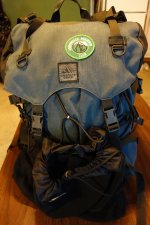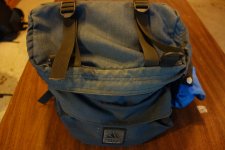Although I've lived in Alaska five decades, I grew up in Northern Minnesota and still have 3 or 4 Duluth Packs stored away. They haven't been used in years.
I looked through the Duluth Pack website recently and was astounded at the cost of new ones. If there is interest among the traditionalists here, I'll make them available some time this winter as I get bored.
I looked through the Duluth Pack website recently and was astounded at the cost of new ones. If there is interest among the traditionalists here, I'll make them available some time this winter as I get bored.


